Introduction
Creating music-integrated lesson plans can inspire your students while helping them connect to various academic subjects through the universal language of music. Whether you're teaching math, history, or science, integrating music into your lessons can spark curiosity and promote learning in a fun and interactive way. This approach supports students' academic development and allows them to develop emotional and social skills through music.
In this blog, you’ll learn the key elements of a music-integrated lesson plan, explore the importance of a student-first approach, and discover techniques to keep your lessons creative and engaging. We'll also cover how to assess progress, the importance of student choice, and how to integrate specific instruments, like the handpan, into your lessons.
What are Music-Integrated Lesson Plans?
Music-integrated lesson plans are structured teaching strategies that utilize music to enhance the understanding of academic content. Instead of treating music as a standalone subject, it becomes a means to teach concepts from other disciplines, creating a more holistic learning experience. These lessons can include various activities such as listening to music, playing instruments, singing, or composing, all aimed at teaching core academic concepts more effectively and creatively.
For example, when teaching math, you might use rhythm to help students understand fractions, or when teaching history, you might use songs from a specific era to deepen students’ connection to that period. Music-integrated lessons can be adapted to any age group or academic subject, helping students of all learning styles engage with the material.
“In Full Bloom” - Day 1 - New Project 2021
The key benefit of these lesson plans is that music makes learning more memorable. It enhances retention by connecting emotional responses to music and academic concepts, making lessons both practical and enjoyable.
Components of Music Integrated Lesson Plans
To create a successful music-integrated lesson plan, there are several key components you need to consider:
-
Clear Learning Objectives
Start by setting clear learning goals for your lesson. What do you want your students to learn or understand by the end of the session? Your goals should be specific, measurable, and directly tied to the music and academic content you teach. For example, suppose you're integrating music into a lesson about fractions. In that case, your learning objective might be: "Students will be able to identify and work with fractions by clapping and playing rhythms that match fractional values."
-
Music Selection
Your chosen music is critical to your lesson plan. The music should support the academic content and fit the learning objectives. You may select songs, instrumental pieces, or rhythms that correspond to your teaching topic. The music should be engaging and appropriate for your students' age and skill level.
-
Engagement Activities
Plan activities that encourage students to interact with the music. This can include singing, playing instruments, moving to the music, or creating musical compositions. Activities should promote active participation rather than passive listening to ensure that students are fully engaged in the learning process.
-
Reflection and Discussion
After the music activity, allow students to reflect on what they have learned. This can involve discussions, journaling, or group activities that will enable them to connect their musical experience with the academic content.
"Your Path is Guided" | Handpan Meditation #24 | Prana Rising
-
Assessment and Evaluation
Assess how well your students have grasped the academic concepts and their engagement with the music activity. Use quizzes, presentations, or informal assessments to gauge their understanding and participation. The feedback will help you refine future lessons.
Student-First Approach for Designing Music-Integrated Lesson Plans
The student-first approach involves considering your students' needs, interests, and learning styles when designing your lesson plans. Rather than focusing solely on the content you want to teach, you must consider making the lesson engaging and accessible to your students. Here are some strategies for a student-first approach:
-
Differentiation
Recognize that each student learns differently. Some may thrive with visual cues, while others may respond better to auditory or kinesthetic learning. By offering a range of music-related activities, like singing, dancing, playing instruments, or listening, you can cater to different learning styles.
-
Student Interests
Incorporate students’ interests into your music choices. If students love a particular genre, use that music to teach concepts more relevantly. For example, if your class enjoys hip-hop, you might use rap songs to teach rhythm or historical events.
-
Individual Pace
Not every student will learn at the same pace, especially when integrating music into other subjects. Allow students to progress at their own rate, providing extra support for those who need it and challenging those who are ready for more advanced activities.
Importance of Student Choice
When designing music-integrated lesson plans, offering students a degree of choice is a powerful motivator. Allowing students to choose how they engage with the music and the activities promotes ownership of their learning and encourages them to be more invested in the process.
For example:
-
Song Selection
Allow students to choose which songs or types of music they would like to explore about a given topic. This helps create a more personalized learning experience.
-
Creative Expression
When teaching a lesson on emotions, give students the option to express their feelings through their musical compositions or performances. This lets them use their creativity to connect emotionally with the lesson.
Prana Rising performs "...and In My Deepening Breath" by Prana Rising (4 of 7)
-
Activity Choice
Offer students options regarding how they interact with the lesson material. Some might prefer writing lyrics, while others may enjoy creating rhythms. Providing flexibility can make learning more fun and inclusive.
Creative Techniques for Music Integration Lessons
Creativity is the heart of any music-integrated lesson. Using innovative techniques to incorporate music into your lessons will keep your students engaged and motivated. Here are some methods to consider:
-
Rhythm and Movement
When teaching math, science, or language arts, rhythm and movement can help students better understand abstract concepts. For example, clapping to the beat can help students visualize mathematical fractions, or dancing to a rhythm can help teach patterns in science.
-
Songwriting Projects
Have your students create songs related to a topic you’re teaching. This could be a historical event, a scientific concept, or a vocabulary list in a language. Writing their lyrics helps students memorize the material more effectively.
-
Multisensory Experiences
Music offers an opportunity for multisensory learning. Incorporate visuals, movements, and hands-on instruments to create a more immersive experience. For example, when studying historical events, students can listen to period music while viewing historical photos or engaging in drama activities involving acting out the events.
“Thank You” | Prana Rising | Handpan Performances #1
-
Use of Technology
Numerous apps and online resources can be used to enhance music integration lessons. Tools like GarageBand, MusicTheory.net, and other interactive platforms allow students to create, mix, and learn music digitally. This can be a great way to integrate modern technology into lesson plans.
Assessment Strategies in Music Integrated Lesson Plans
Assessing the effectiveness of music-integrated lessons is just as important as creating them. The goal is to evaluate how well students have grasped the academic content through their engagement with music. Here are some assessment strategies:
-
Formative Assessments
These ongoing assessments can occur throughout the lesson and help gauge student engagement and understanding. Use observational assessments while students are participating in music activities or group work. Provide real-time feedback to guide them.
-
Student Self-Assessment
Encourage students to reflect on their learning. After an activity, ask them how they felt about their progress and what they found challenging. This allows students to take responsibility for their knowledge and can offer valuable insights into their understanding.
-
Peer Review
Peer assessment is an effective way to foster a sense of community in the classroom. Let students give each other feedback on their musical creations, whether a song, rhythm, or performance. This helps foster communication and critical thinking skills.
Improvisation on "Kintabili We"
-
Performance-Based Assessment
Have students perform the music or present their projects to the class. This allows them to demonstrate their understanding and creativity in a tangible way. Performance-based assessments efficiently gauge how well students have internalized the academic material.
Encouraging Curiosity and Question-Centric Learning
Curiosity is key in music-integrated lessons. Encourage your students to ask questions and explore different aspects of music as they relate to the topic at hand. This inquiry-driven approach deepens their understanding of the material and helps develop critical thinking and problem-solving skills. Some strategies to encourage curiosity include:
-
Open-Ended Questions
Ask open-ended questions like, “How do you think this song connects to what we are learning?” or “What other ways can we express this idea through music?”
-
Exploration Time
Give students time to explore different instruments or music styles related to the lesson. For example, let them experiment with different sounds or rhythms to explore how they can express an emotion or concept.
Learning
-
Student-Led Discussions
Allow students to lead discussions on how music connects to different subject areas. This gives them ownership over their learning and makes the lesson more interactive.
Music Integrated Handpan Lesson Plans by The Sound Artist
The handpan is a unique and versatile instrument that works beautifully in music-integrated lesson plans. The soothing sound of the handpan makes it ideal for creating a calm and reflective atmosphere in your classroom. Here’s how you can incorporate the handpan into your lessons:
Use the handpan to help students explore different emotions. Play different melodies and ask them to describe how the music makes them feel. This works well in lessons focused on emotional expression or mindfulness.
-
Cultural Lesson
The handpan has a rich cultural background and is often associated with world music, as well as instruments like the steel drum. Integrate geography or cultural studies lessons by exploring the origins and role of the handpan in various cultures.
The handpan is an excellent tool for teaching rhythm. Have students create rhythms to represent various concepts or emotions. You can break down the rhythm of a song or have them make their rhythmic compositions.
Conclusion
Music-integrated lesson plans are a great way to make learning more exciting and engaging for students. By incorporating music into your lessons, you can help students better understand academic topics while also allowing them to express their creativity and emotions. Whether you're teaching history, math, science, or art, incorporating music into your lessons makes learning more engaging and memorable.
You’ll learn how to use instruments like the handpan, give students choices, and encourage them to ask questions, all of which will help make your music-integrated lessons both enjoyable and educational.
The Sound Artist Music & Handpan School caters to a diverse audience, ranging from young children to adults, offering lessons tailored to various skill levels and goals. Alongside expert instruction, The Sound Artist also sells high-quality handpan instruments. With memberships starting at just $99 per month, students can access flexible lesson options, including unlimited group classes.
Schedule your free music lesson with us today and discover how exploring music can lead to emotional healing or simply enjoy the therapeutic benefits of playing the handpan.




